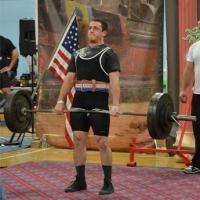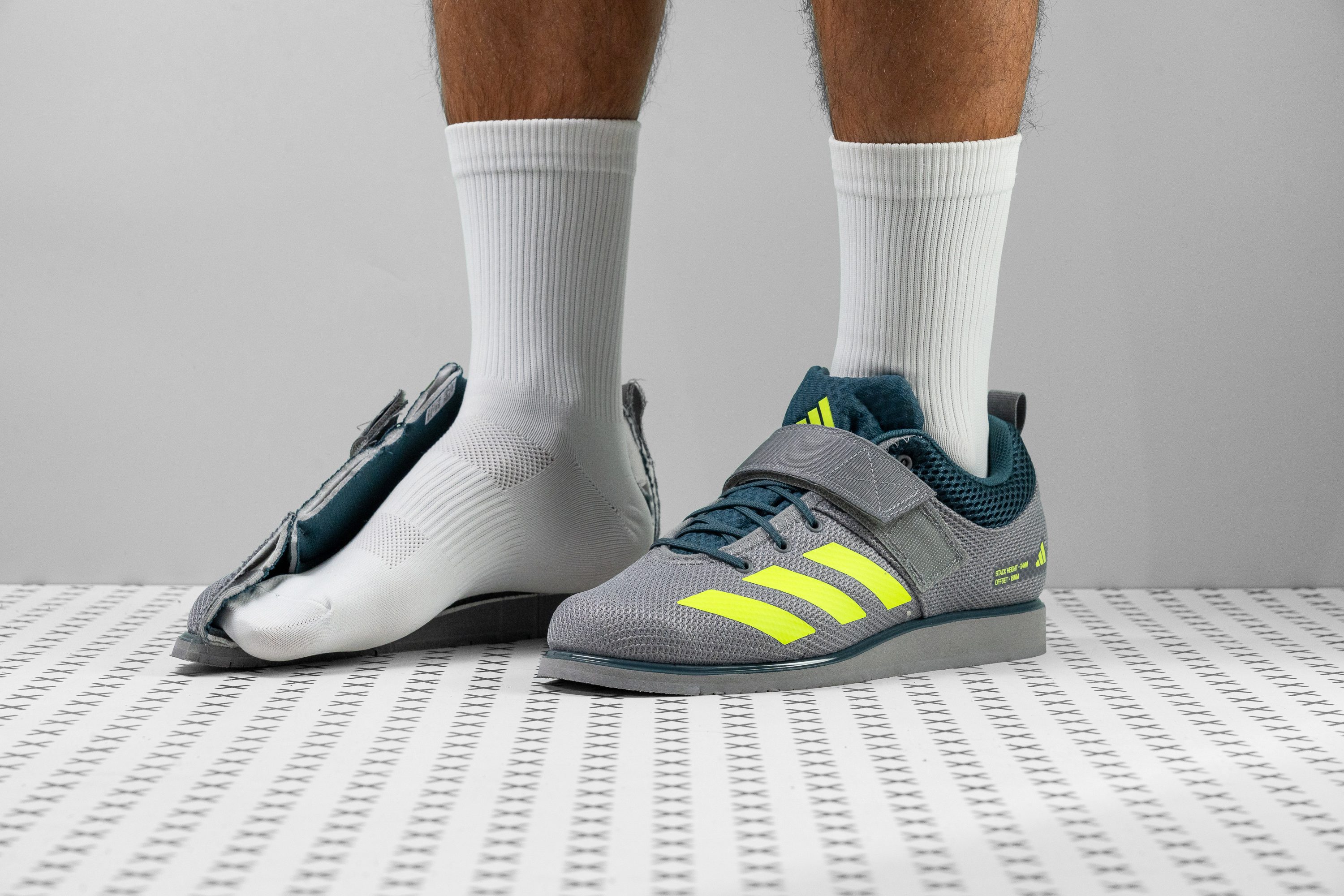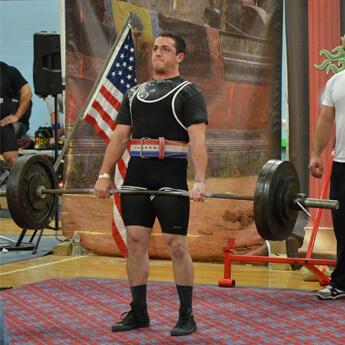Our verdict
- Top pick in best weightlifting shoes
- Top pick in best powerlifting shoes
Pros
- Stable base for moderate lifting
- Good for accessory exercises
- Solid bite on gym floors
- Secure foothold
- Supportive Velcro strap
- Reasonably priced
- Contains sustainable materials
Cons
- Lacks breathability
- Upper is not very durable
- Tongue shifts
Audience verdict
- Top 27% in training shoes
- Top 27% in training shoes for wide feet
Comparison
The most similar training shoes compared
+ + Add a shoe | |||||
|---|---|---|---|---|---|
| Audience score | 90 Great! | 87 Great! | 87 Great! | 91 Great! | |
| Price | £90 | £115 | £220 | £185 | |
| Use | WeightliftingGymPowerlifting | WeightliftingGymPowerlifting | WeightliftingGymPowerlifting | WeightliftingGymPowerlifting | |
| Shock absorption | Low | Moderate | Low | Low | |
| Energy return | Moderate | Moderate | Low | Low | |
| Traction | High | - | Low | - | |
| Drop lab | 15.2 mm | 15.1 mm | 20.5 mm | 20.5 mm | |
| Heel stack lab | 30.0 mm | 26.0 mm | 33.0 mm | 33.5 mm | |
| Forefoot | 14.8 mm | 10.9 mm | 12.5 mm | 13.0 mm | |
| Weight lab | 15 oz / 425g | 14.8 oz / 420g | 22.1 oz / 627g | 20.1 oz / 571g | |
| Breathability | Warm | Moderate | Warm | Warm | |
| Width / fit | Narrow | Narrow | Medium | Medium | |
| Toebox width | Narrow | Narrow | Narrow | - | |
| Size | True to size | Half size small | True to size | Half size small | |
| Midsole softness | Firm | Firm | Firm | Firm | |
| Stiffness | Stiff | Stiff | Stiff | Stiff | |
| Torsional rigidity | Stiff | Stiff | Stiff | Stiff | |
| Heel counter stiffness | Stiff | Stiff | Stiff | Stiff | |
| Toebox durability | Decent | Decent | Good | Decent | |
| Heel padding durability | Bad | Decent | Good | - | |
| Outsole durability | Decent | - | - | - | |
| Midsole width - forefoot | Narrow | Very wide | Very narrow | Wide | |
| Midsole width - heel | Very narrow | Very wide | Average | Wide | |
| Widths available | NormalWide | Normal | Normal | Normal | |
| Insole thickness | Average | Thin | Average | Very thick | |
| Outsole thickness | Very thick | Average | Average | Average | |
| Outsole hardness | Average | Very hard | Very soft | Very hard | |
| Heel tab | Pull tab | None | None | None | |
| Tongue: gusset type | None | Both sides (semi) | None | Bootie | |
| Tongue padding | Average | Average | Thick | Very thick | |
| Ranking | #9 Top 28% | #14 Top 43% | #16 Top 49% | #4 Top 12% | |
| Popularity | #14 Top 43% | #18 Bottom 45% | #20 Bottom 39% | #7 Top 21% |
Who should buy
Having tried and tested the Adidas Powerlift 5, we are sure that it will be an excellent match for the following:
- entry-level athletes who are just starting out with lifting
- gymgoers who only lift occasionally (i.e. once a week)
- people with limited budgets who want great value for money
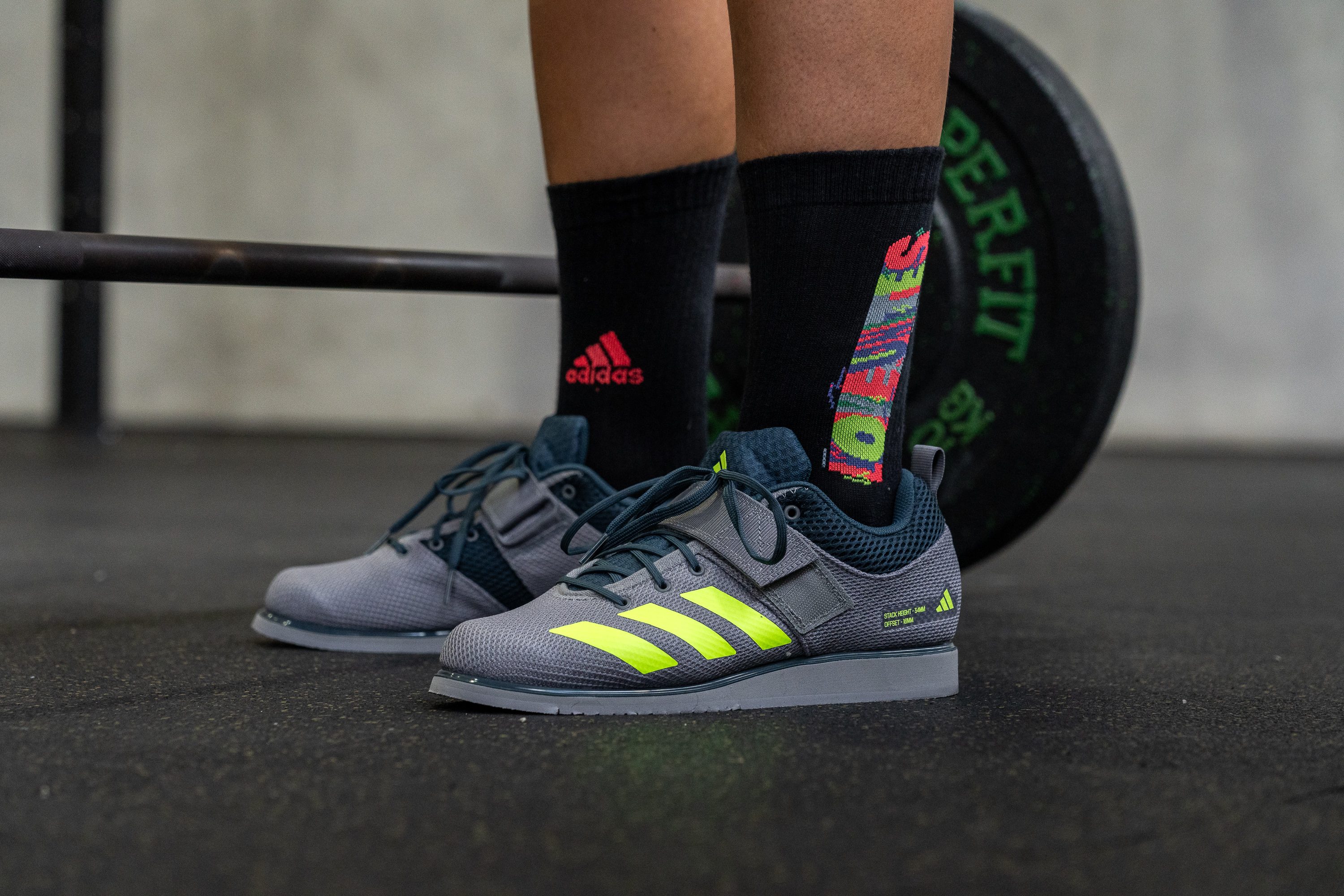
Who should NOT buy
The Powerlift 5 has an unforgivably narrow toebox and it also runs short length-wise.
You will definitely have to go at least half a size up or consider a slightly roomier Nike Savaleos. The Savaleos also has the advantage of being more breathable.
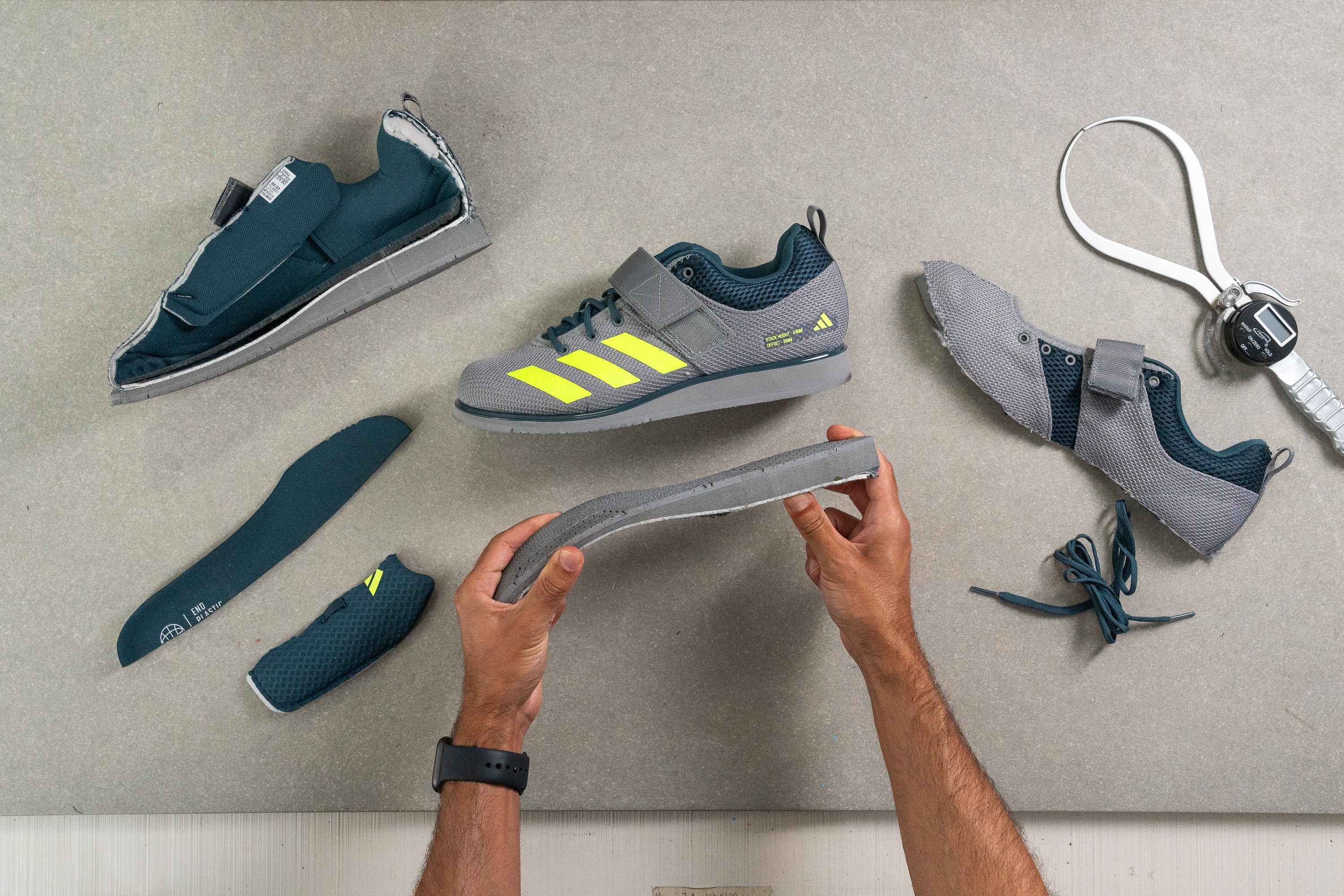
Platform
Shock absorption
The platform of the Powerlift 5 is made of high-density EVA foam as opposed to the hard and incompressible TPU on the more advanced lifting shoes. There is still a little bit of give there.
That's why its shock absorption measurements (52 SA in the heel and 31 SA in the forefoot) turned out to be higher than those of the Reebok Legacy Lifter III (33 SA/29 SA) and the Nike Romaleos 4 (31 SA/19 SA).
We do not recommend lifting over 350 pounds in this Adidas lifter as the power transfer becomes less efficient.
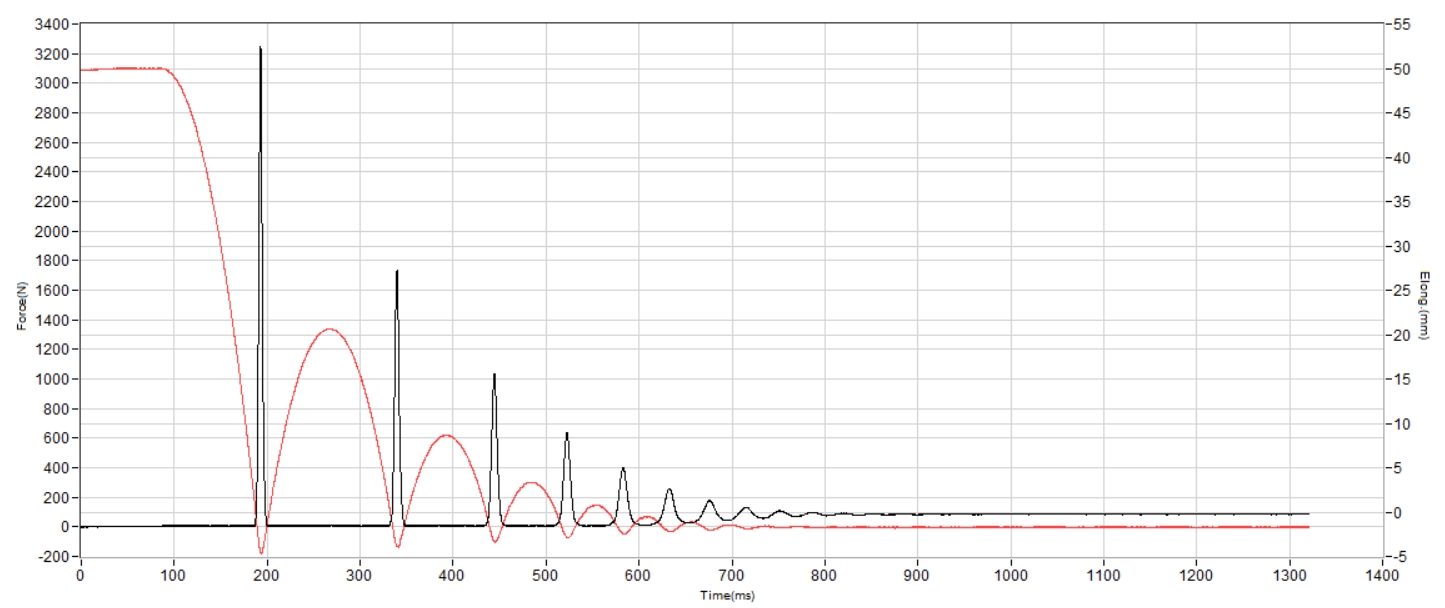
| Powerlift 5 | 52 SA |
| Average | 48 SA |
Energy return
Consequently, the energy return also turned out to be higher in this Adidas lifting shoe. At 50.6% in the heel and 44.8% in the forefoot, the rebound is more pronounced here compared to the Legacy Lifter or the Romaleos.
But on the flip side, this is what makes the Powerlift 5 more beginner-friendly and slightly more versatile in its gym use.
| Powerlift 5 | 50.6% |
| Average | 47.0% |
Heel stack
Using a calliper, we measured the shoe's heel stack height at 30 mm. This turns out to be lower than the officially stated 34 mm, but doesn't seem to affect the effective heel height, or drop, as much (more on that below).
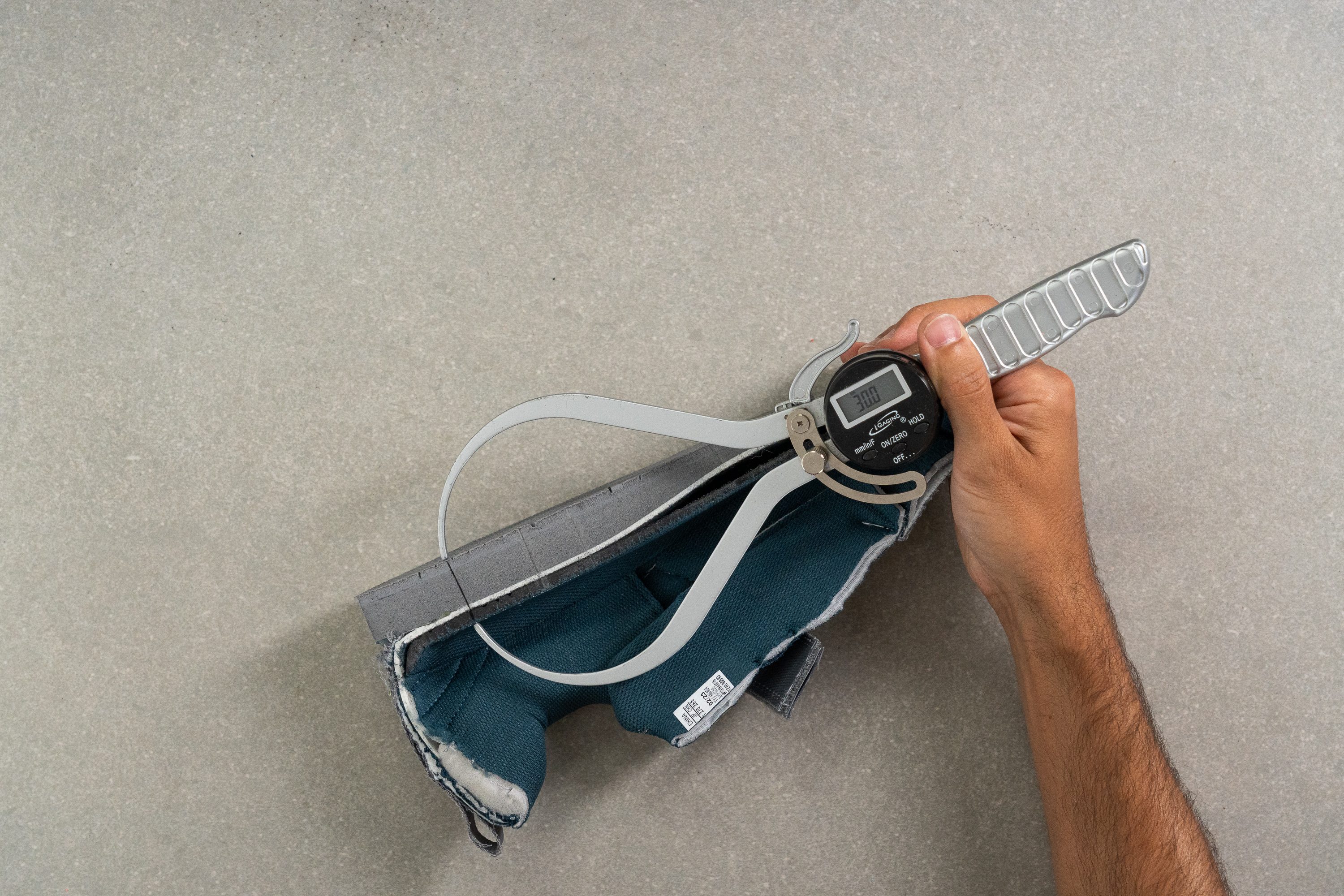
| Powerlift 5 | 30.0 mm |
| Average | 28.3 mm |
Forefoot stack
We also found that the forefoot sits lower than stated. Based on our calliper measurement, it is 14.8 mm whereas Adidas claims it to be 18 mm.
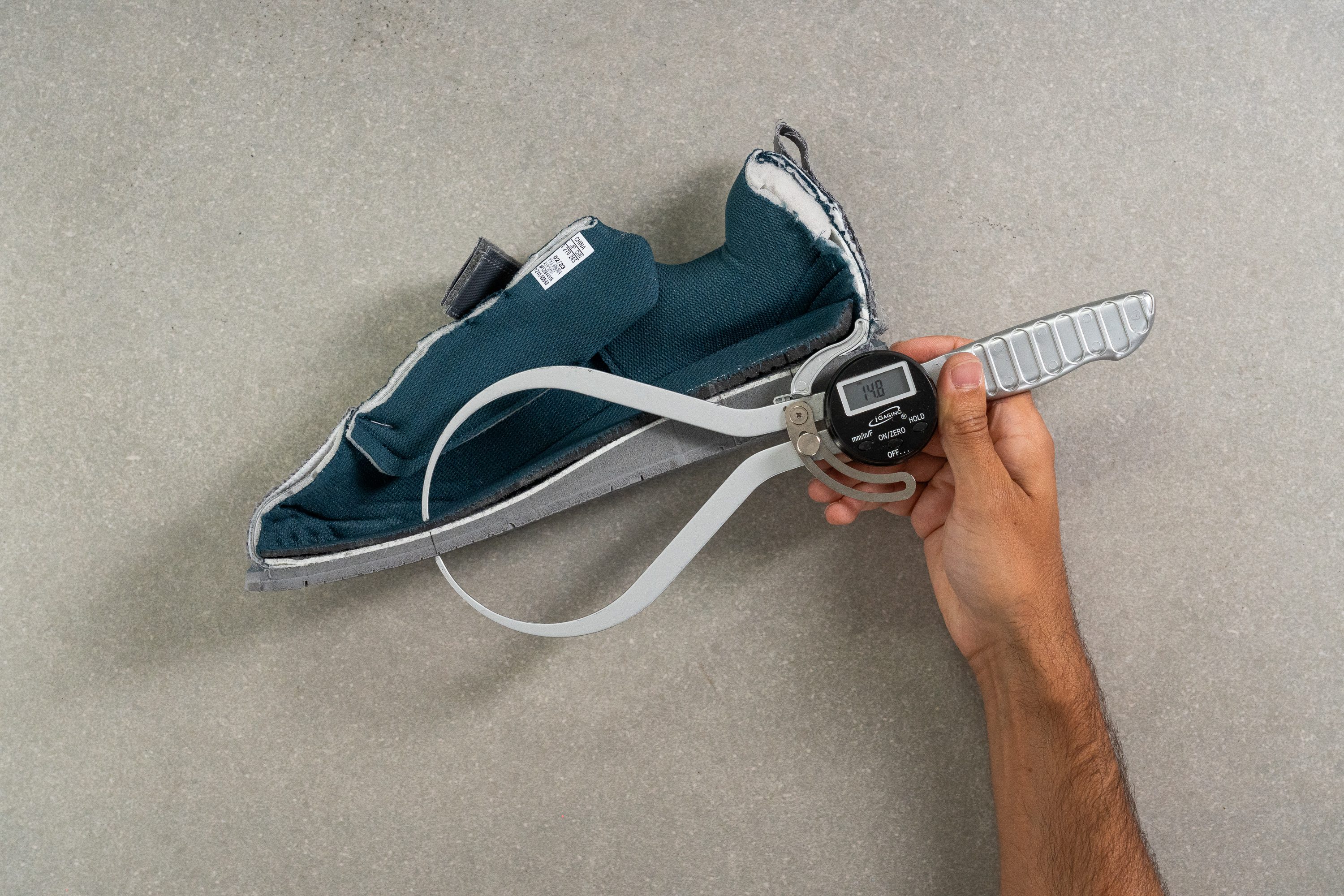
| Powerlift 5 | 14.8 mm |
| Average | 12.9 mm |
Drop
Interestingly enough, the heel-to-toe drop is only 0.8 mm away from the official stats (16 mm). Our own measurements show that the drop is 15.2 mm.

This is the lowest possible heel drop in weightlifting shoes. It is perfect for entry-level athletes who are only getting used to the heel elevation. It is also a bit more versatile, allowing you to do more gym exercises aside from squatting and lifting.
| Powerlift 5 | 15.2 mm |
| Average | 15.4 mm |
Platform firmness
To put it into numbers, our durometer shows a reading of 51 HA when pressed against the shoe's platform. This is 47% softer than our tested lifters on average! There is a good reason why advanced athletes choose the Reebok Legacy Lifter. The firmness of these platforms shows 96-97 HA!
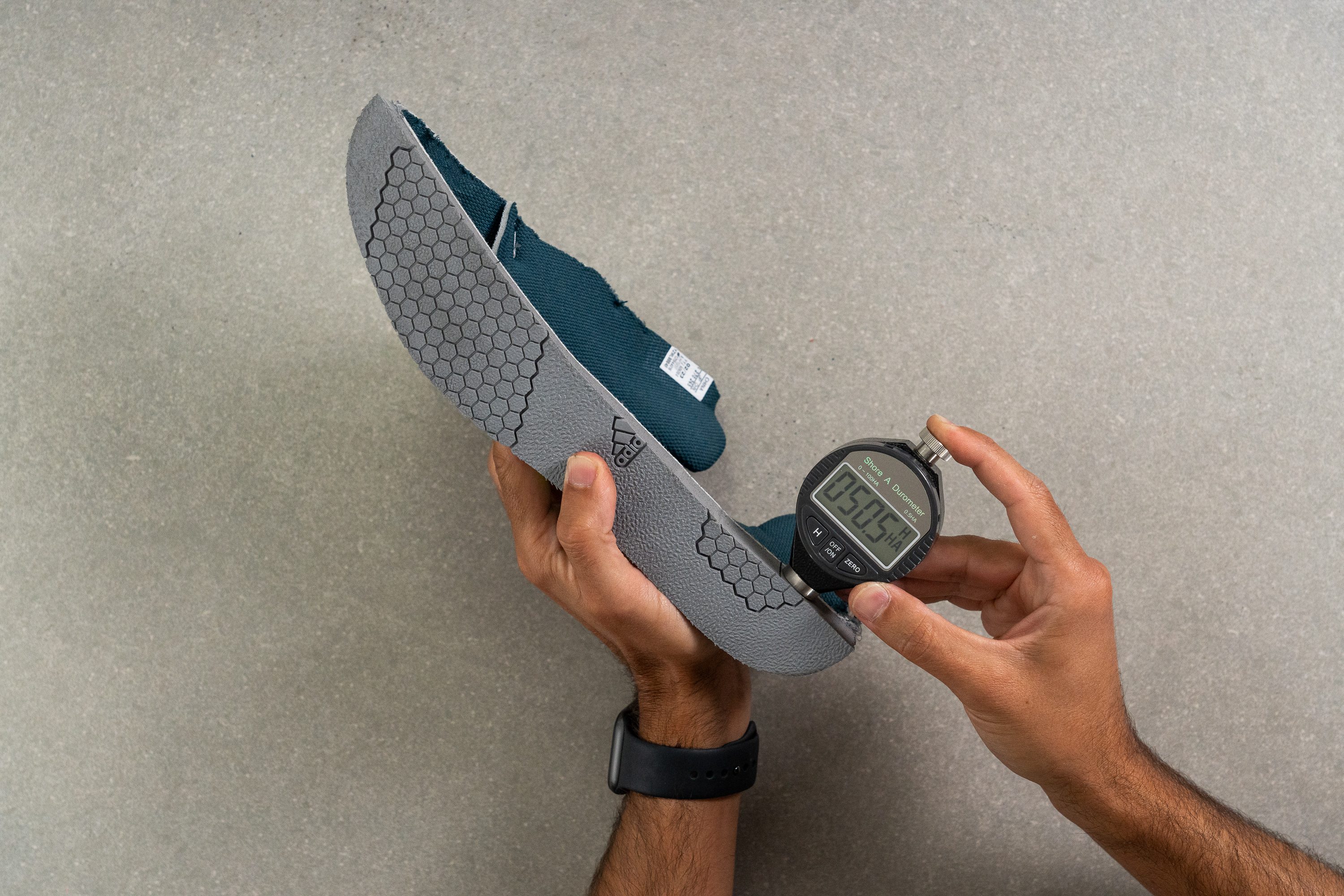
| Powerlift 5 | 51.0 HA |
| Average | 69.2 HA |
Size and fit
Size
Adidas Powerlift 5 fits true to size (177 votes).
Width / Fit
The fit of the Powerlift 5 is nowhere near accommodating. Even for our average-volume feet, this was tight.
To confirm our impressions, we created a mould of the shoe's interiors using our special gel. Once the gel had solidified, we measured its widest part with a calliper and the tool returned a below-average reading of 89.2 mm.

| Powerlift 5 | 89.2 mm |
Toebox width
As the shoe gets narrower toward the toes, we also measured the width of its toebox at the big toe. At 66.8 mm, it also proved to be slightly narrower than average.
Athletes with medium-width feet should expect a snug one-to-one fit.
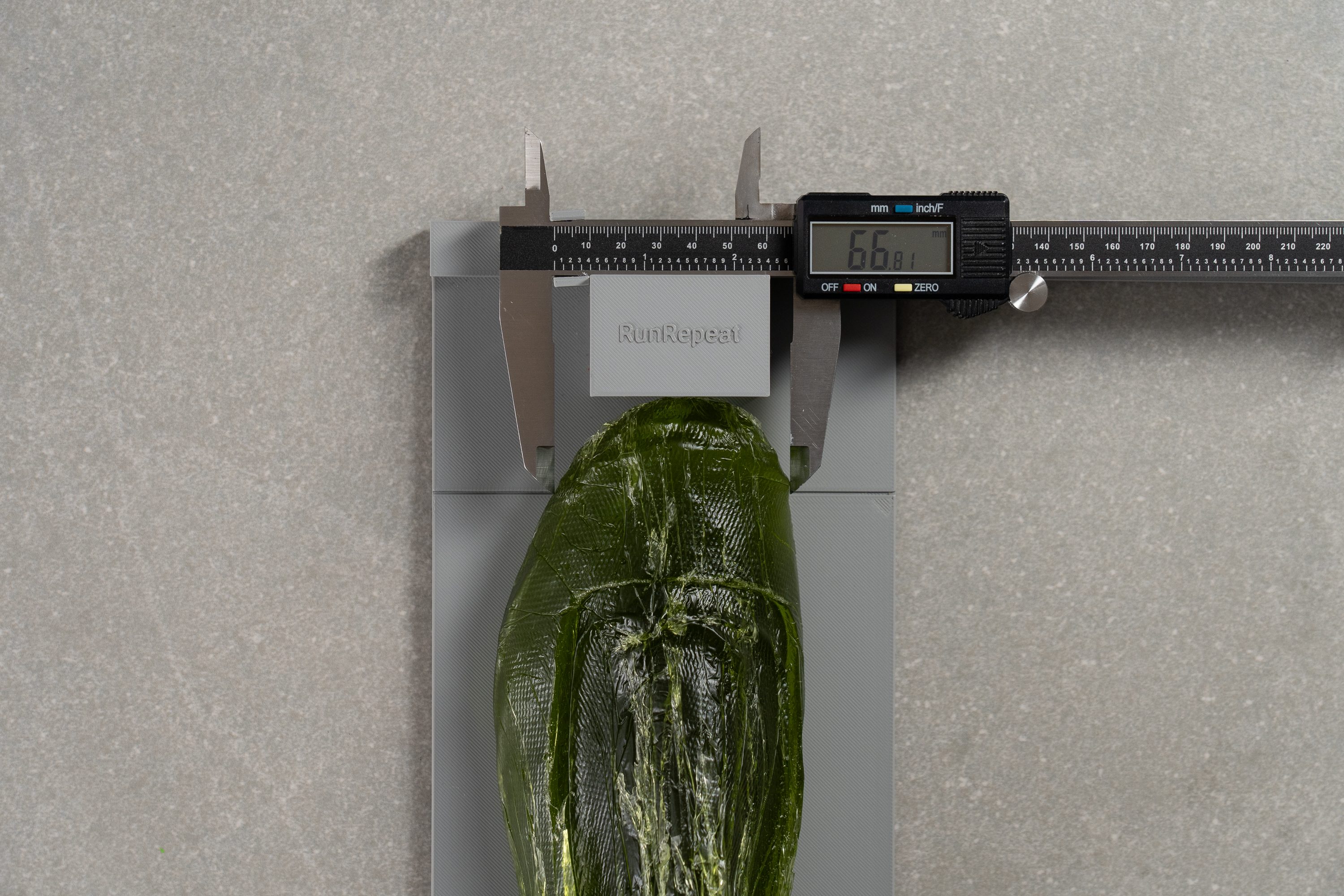
| Powerlift 5 | 66.8 mm |
Toebox height
Gladly, the taller toebox of this Adidas lifter doesn't put any pressure on the toes. We measured its vertical height at an above-average reading of 27.1 mm.
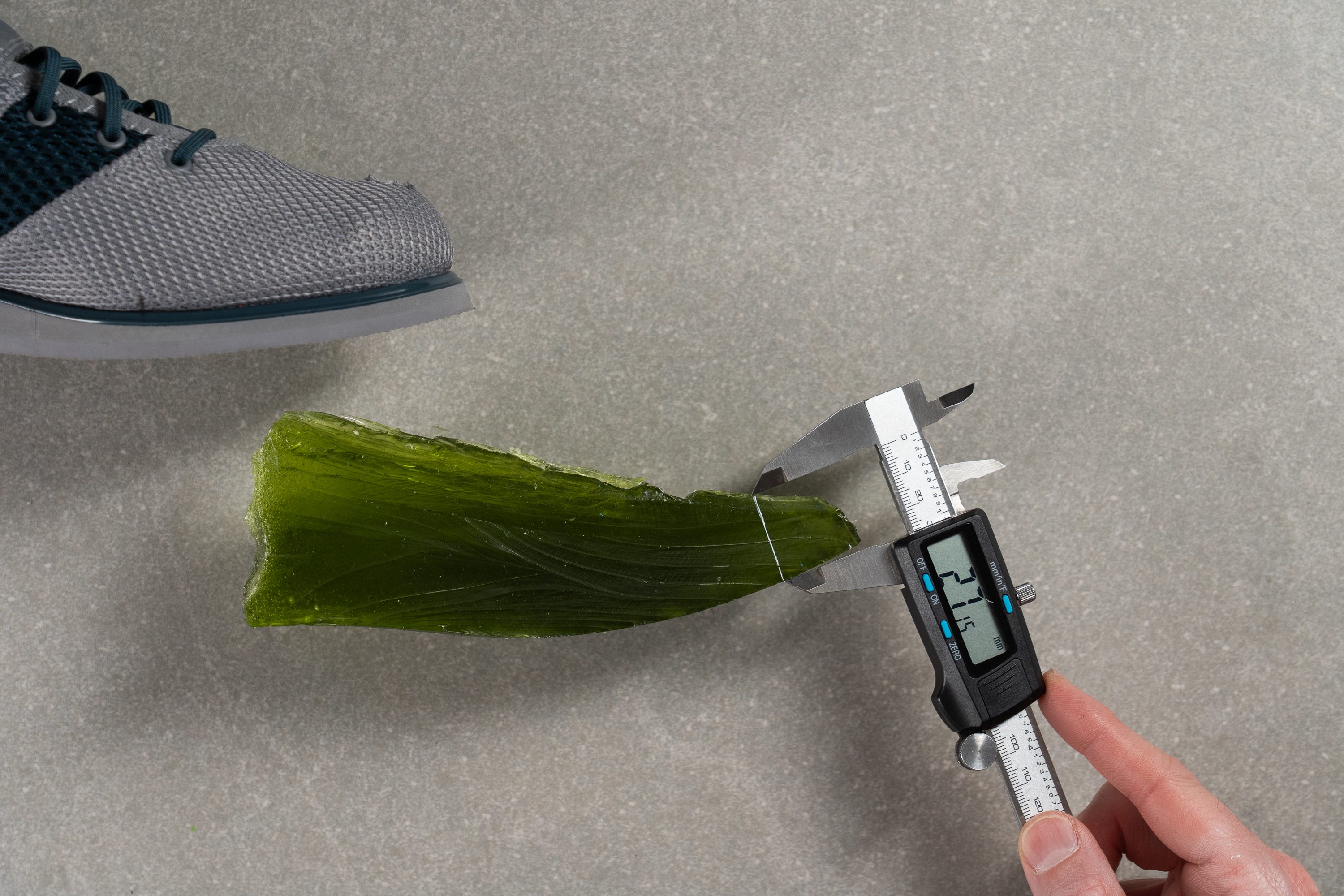
| Powerlift 5 | 27.1 mm |
Velcro strap
Good news for the folks who often struggle with Velcro straps. There is a full-length attachment which means that you can tune in the fit as much as you need.
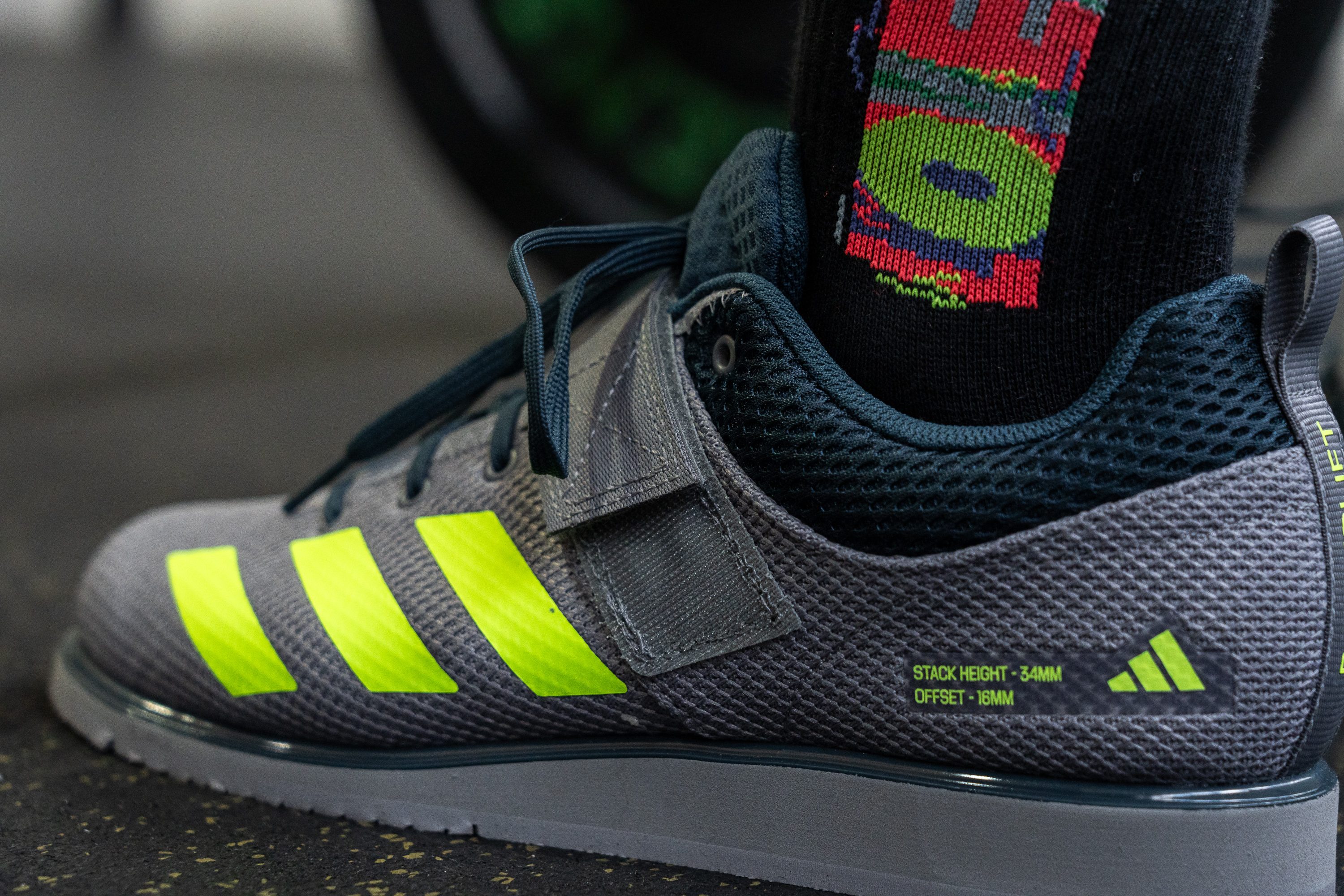
Traction / Grip
The Powerlift 5 has quite an effective grip on all kinds of lifting surfaces.

Traction test
With a solid friction score of 0.46, the Powerlift 5 maintains an effective grip on various lifting surfaces, even those get wet from sweat.
| Powerlift 5 | 0.46 |
Stability
Lateral stability test
The Adidas Poiwerlift 5 is a stable shoe... for its kind.
As you can see, there is a little bit of "jump" in the shoe's platform as we shift our ankles side-to-side. But this is still within the normal range for a shoe of this stack height and weight.
Torsional rigidity
The torsional rigidity of the Powerlift 5 is at the highest level! We rated it with a solid 5 out of 5 as there is absolutely no give to the shoe when we try to twist it.
Having a stiff platform to lift off adds a lot of confidence when picking up a loaded barbell.
| Powerlift 5 | 5 |
| Average | 4.3 |
Heel counter stiffness
In addition, a stiff heel counter made sure that our ankle wasn't rolling anywhere.
Giving it a good squeeze confirmed our perceived heel clutch. The Powerlift 5 gets the highest 5 out of 5 rating for its heel stiffness as well.
| Powerlift 5 | 5 |
| Average | 4.8 |
Midsole width - forefoot
The shoe's platform is not among the widest but it was to be expected. As an entry-level lifter, it is made wide enough to only handle the moderate weight it is intended for.
In the widest part of the forefoot, our calliper shows 103.1 mm of width. This is a few millimetres narrower than average.
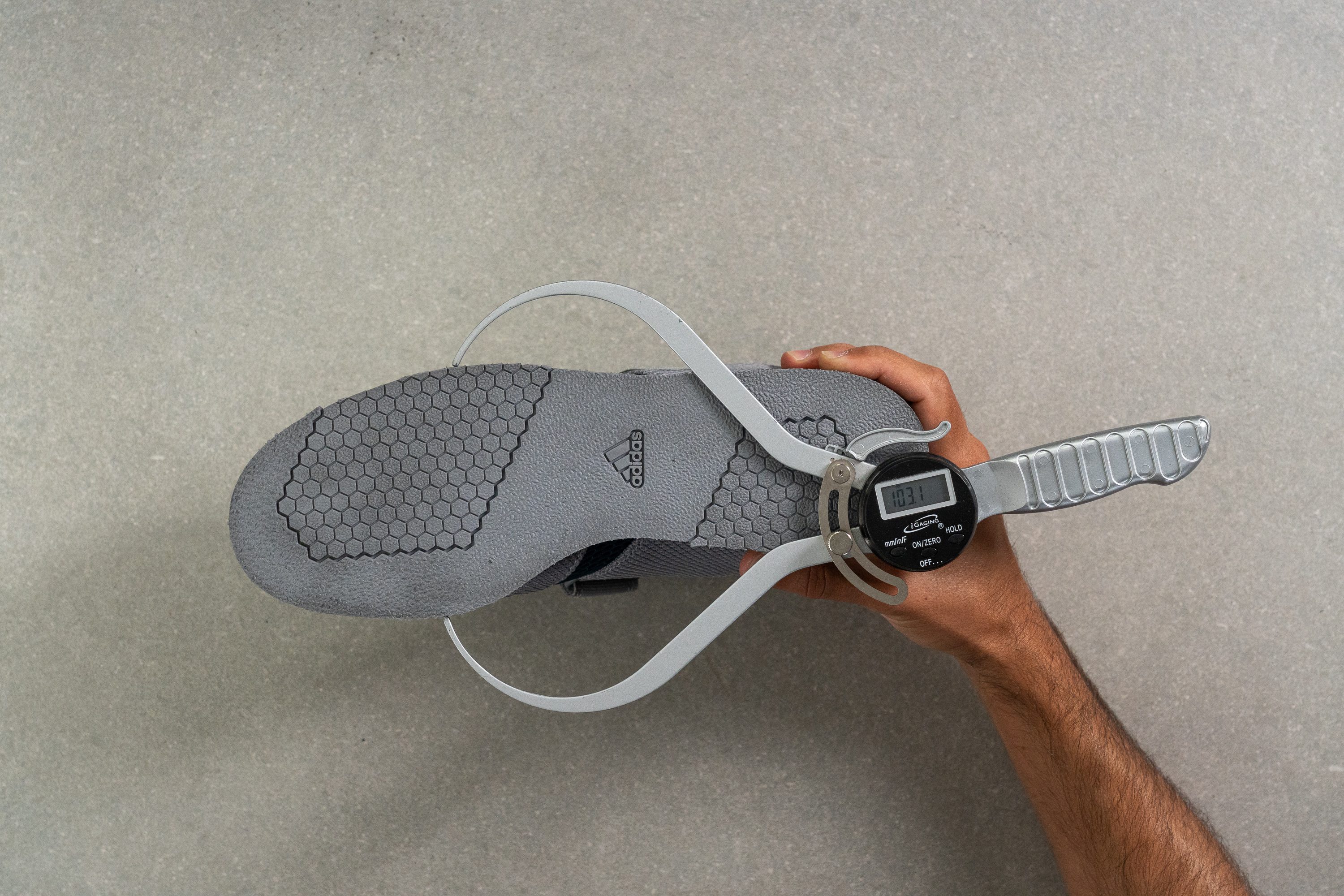
| Powerlift 5 | 103.1 mm |
| Average | 107.7 mm |
Midsole width - heel
The Powerlift 5 is also not super wide in the heel. At 77.1 mm, it is a whole centimetre narrower than the average.
But as we've mentioned before, this allows the shoe to be lighter and more versatile as a gym shoe.
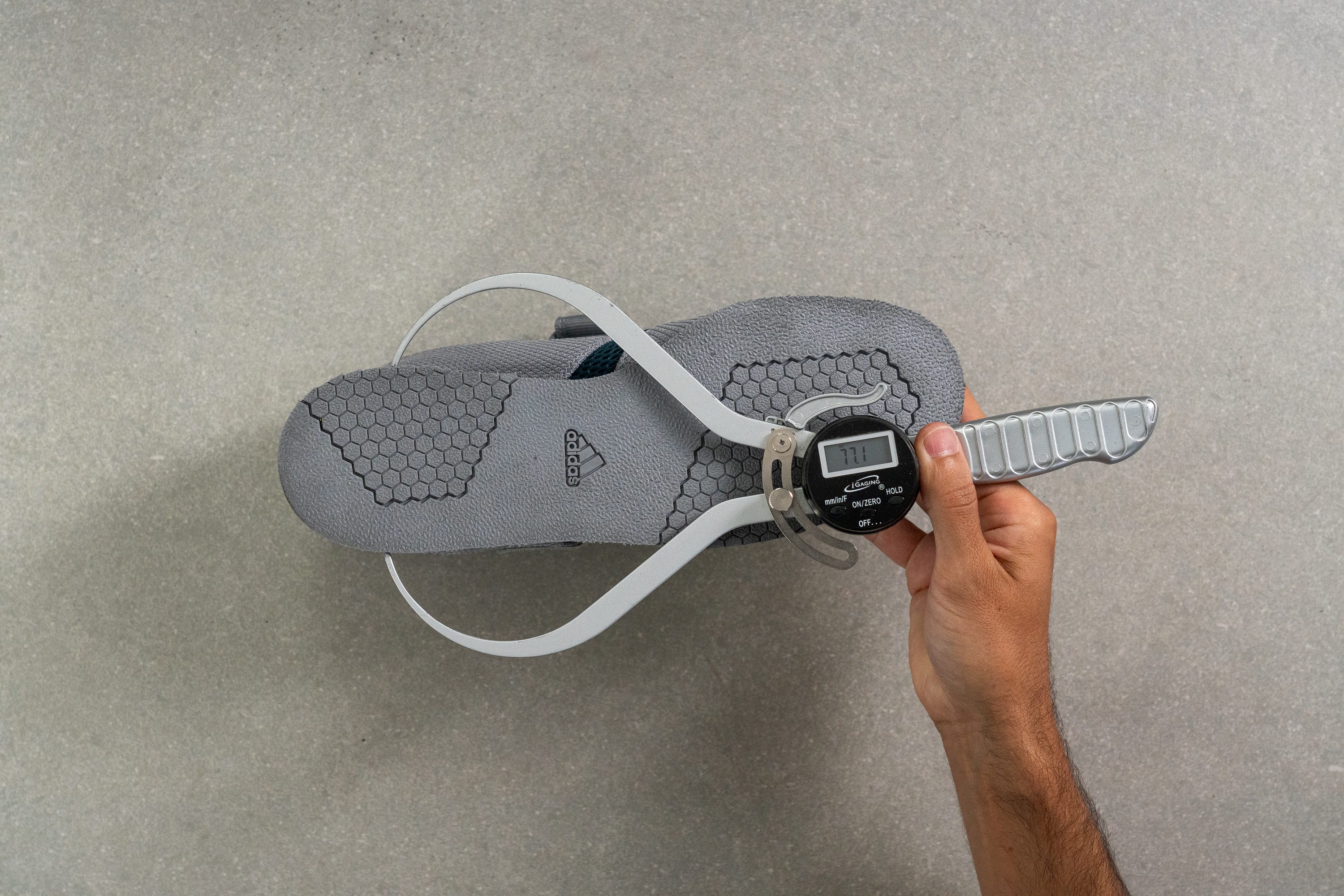
| Powerlift 5 | 77.1 mm |
| Average | 86.7 mm |
Flexibility / Stiffness
The Powerlift 5 turned out to have more forefoot flex than a typical lifting shoe. Our shoe flexing tester showed that it took a little less force (13.3N) to bend the shoe to a 30-degree angle than it takes an average lifter.
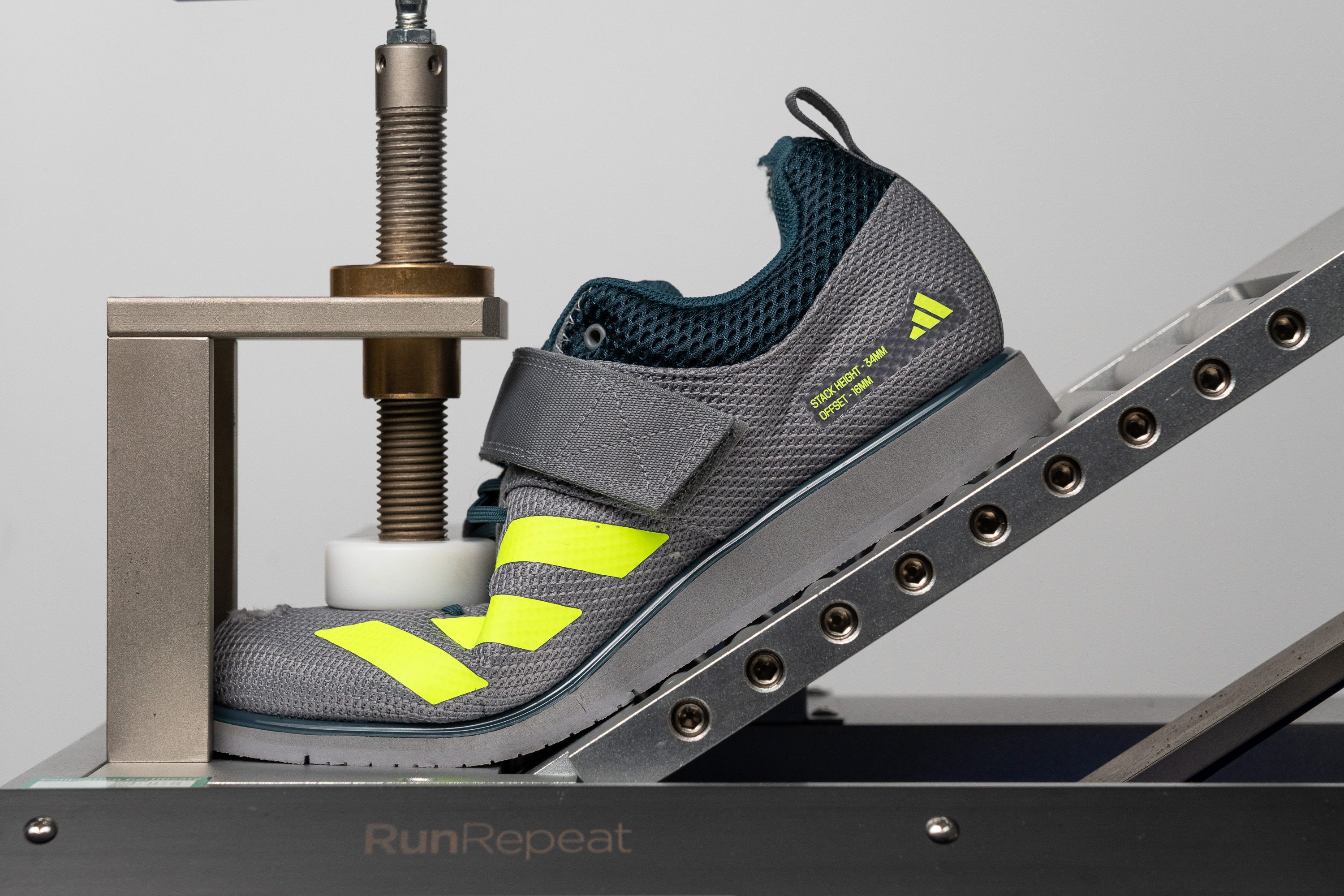
What's more, we found that it also gets more forgiving with use as it takes some time for its stiff canvas/mesh upper to stretch out.
| Powerlift 5 | 13.3N |
| Average | 15.8N |
Weight
With a lower platform and less sturdy materials involved, the Adidas Powerlift 5 turns out to be a lighter shoe as well.
With a weight of 15 oz (425g), the shoe is a whole 3.7 oz lighter than lifting shoes on average!
Actually, some athletes do prefer weightier shoes on their feet for strength training. But the Powerlift 5 offers the advantage of being a bit more walkable and accommodating for accessory exercise lunges, box jumps, wall sits, and more.
| Powerlift 5 | 15.0 oz (425g) |
| Average | 17.5 oz (497g) |
Breathability
You would think that a fabric upper would be more breathable than a leather one, right? Well, not in the case of the Powerlift 5, unfortunately.
Using a smoke-pumping machine to test the upper's breathability, we saw that the smoke could barely escape from the shoe! If it wasn't for the mesh-lined tongue and large eyelets, there would've been zero ventilation in the Powerlift 5. Thus, the shoe earned 2 out of 5 for breathability.
Even the Nike Savaleos, with its perforated leather upper, is doing better with a breathability score of 3/5.
As you can see from the video below, there is absolutely no transparency in the upper and we cannot see a single ventilation hole.
Finally, we turned to our microscope to give you an even better understanding of the upper material.

A fusion of canvas and mesh formed an extra-tight weave for this Adidas shoe. It kind of looks like a winter sweater but even that one has some breathability loops!
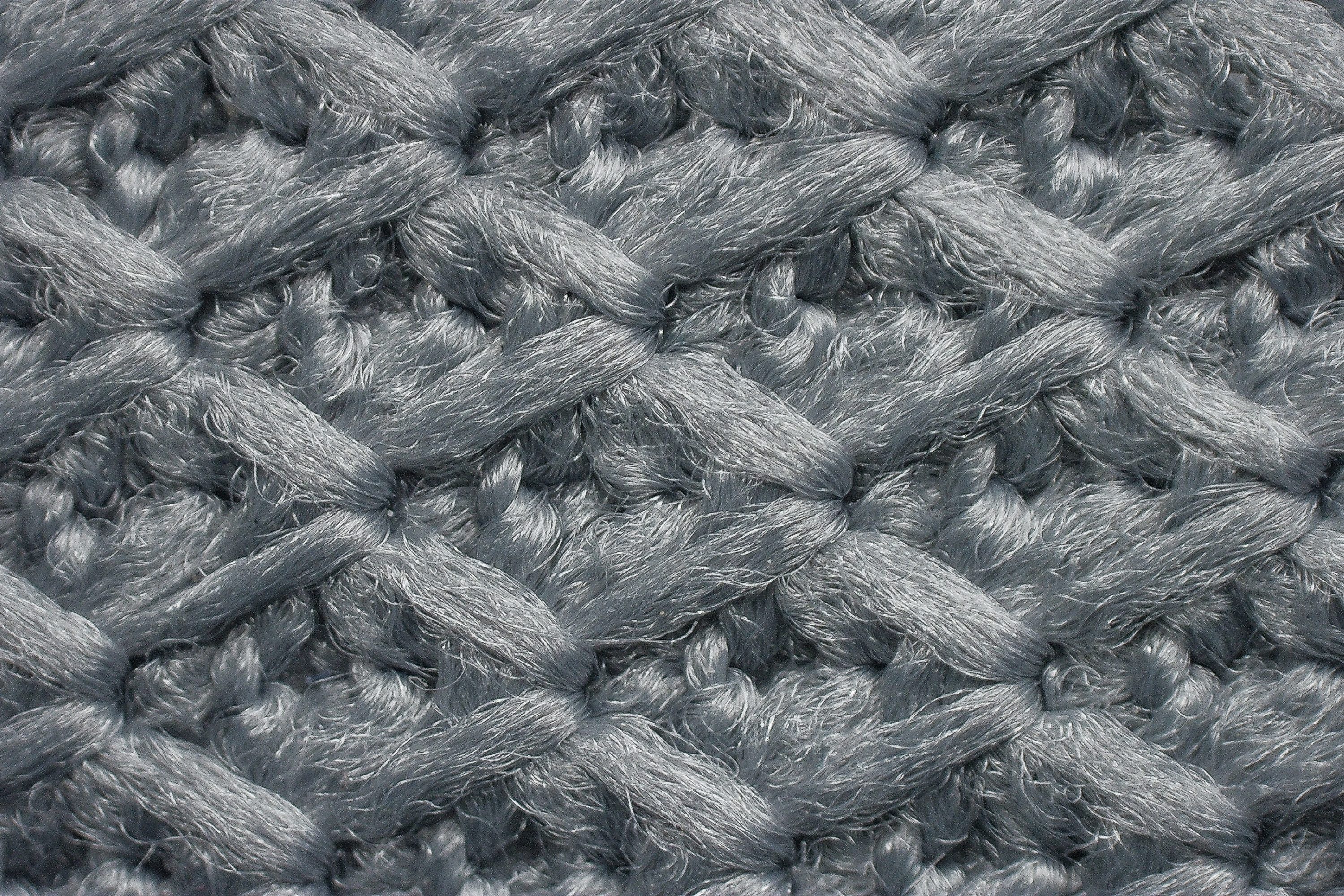
| Powerlift 5 | 2 |
| Average | 2 |
Durability
Toebox durability
Quite often we would see a trade-off between breathability and durability. But the Powerlifter 5 was less than impressive in our durability tests.
Its fabric upper didn't do so well in our Dremel challenge, getting torn quite significantly after 12 seconds of drilling.
Because it wasn't a see-through hole, the shoe escaped the lowest score and got a 2 out of 5 from us.
Perhaps it could be justified at the shoe's price point. Because when we put it next to a premium shoe like the Reebok Legacy Lifter III (£220), it becomes clear why the latter costs £100 more.
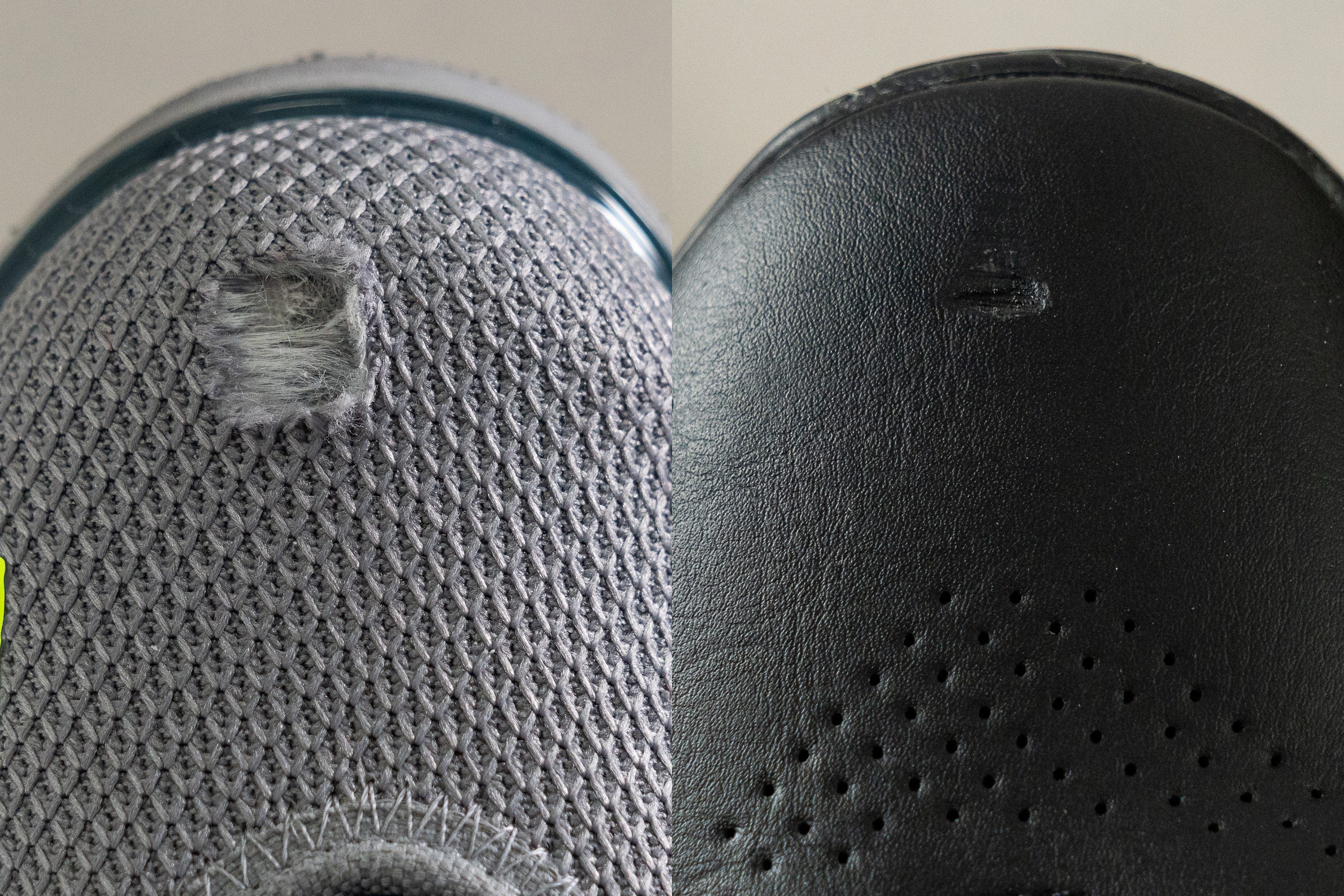
We applied the Dremel with the same force (3.2N) and speed (10K RPM) for 12 seconds to both shoes.
| Powerlift 5 | 2 |
| Average | 3.5 |
Heel padding durability
Applying the Dremel to the shoe's heel padding for 4 seconds resulted in considerable wear and tear as well.
This is one of the worst results that we've seen in weightlifting shoes. We had to rate the Powerlift 5 as low as 1 out of 5 in this parameter.

| Powerlift 5 | 1 |
| Average | 3.6 |
Outsole hardness
Another major contributor to the shoe's longevity is the hardness of its outsole.
Pressing a durometer against the rubber, we got a reading of 84.5 HC. This is the same level of hardness as the average of our weightlifting shoes.
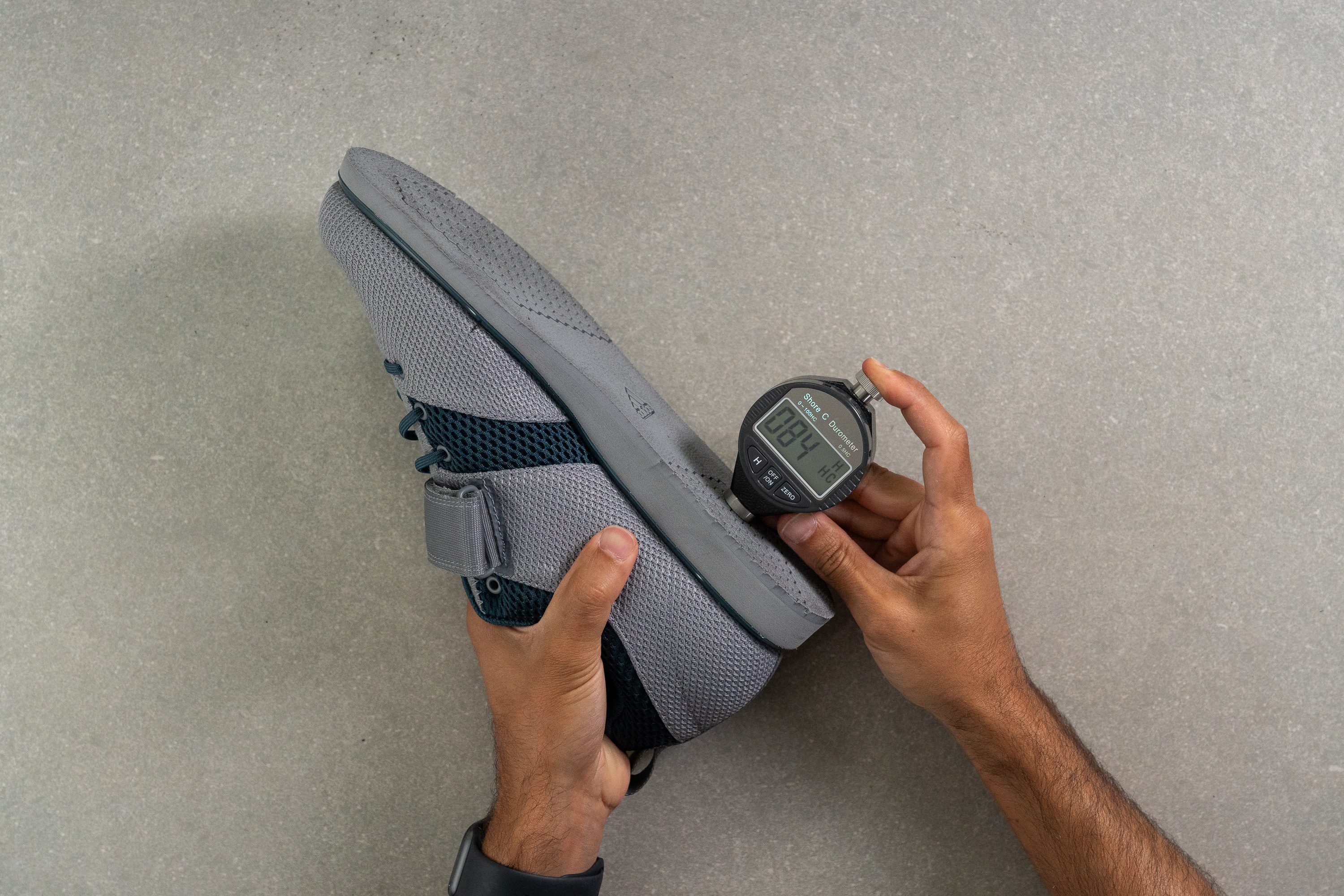
| Powerlift 5 | 84.5 HC |
| Average | 85.1 HC |
Outsole durability
To predict how durable the shoe's outsole is going to be, we drilled it with a Dremel for as long as 22 seconds.
We then measured the depth of the dent with a tread gauge. It showed 1.1 mm which is exactly the same as what we got in other lifting shoes.

Of course, weightlifting shoes are not worn on abrasive surfaces outside. That way, the outsole usually remains intact and the upper is the first one to wear out.
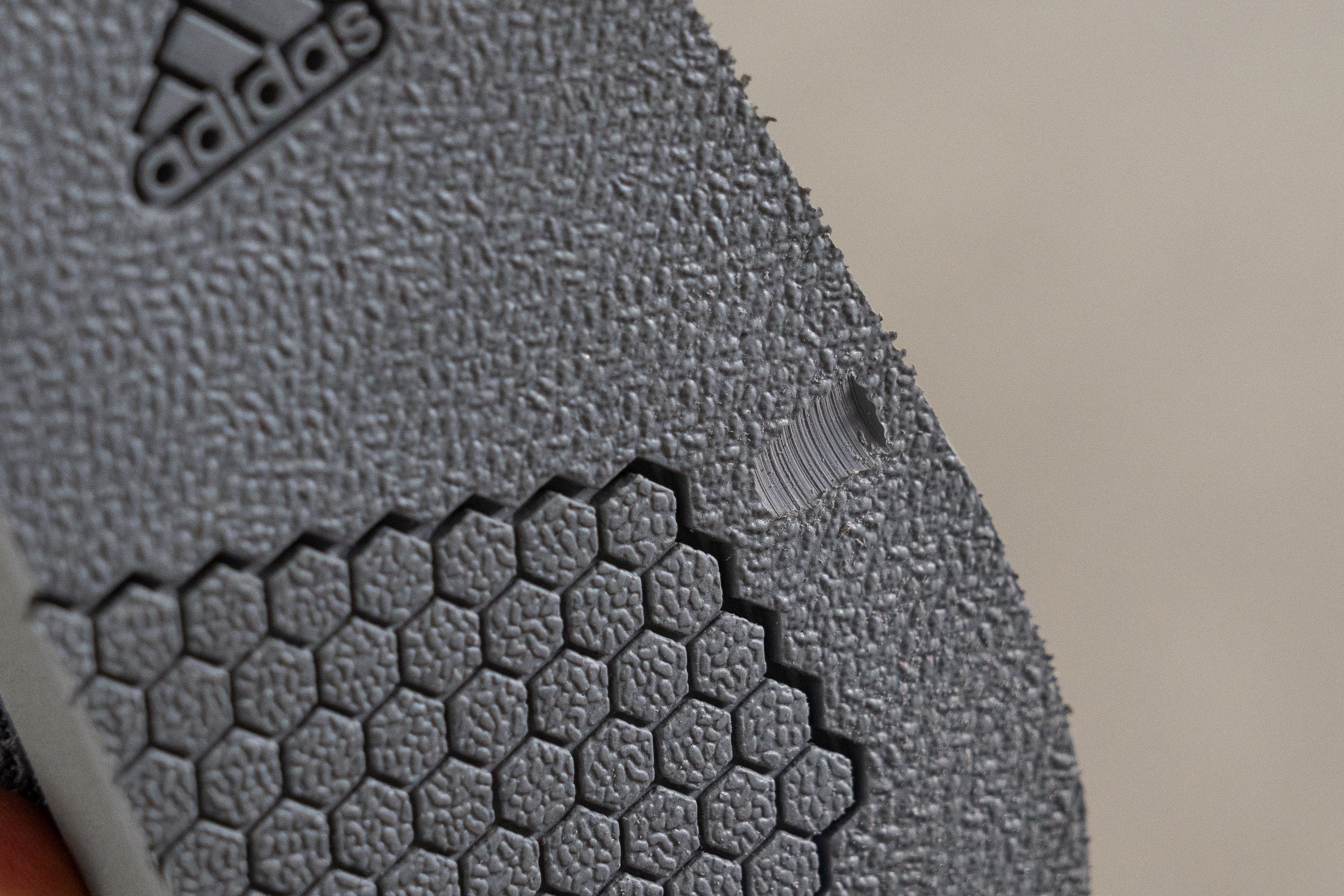
| Powerlift 5 | 1.1 mm |
Outsole thickness
Another reassuring fact is that the outsole of the Powerlift 5 is a whole millimetre thicker than the average.
At 5 mm, it is by far the thickest outsole among our lab-tested lifters.
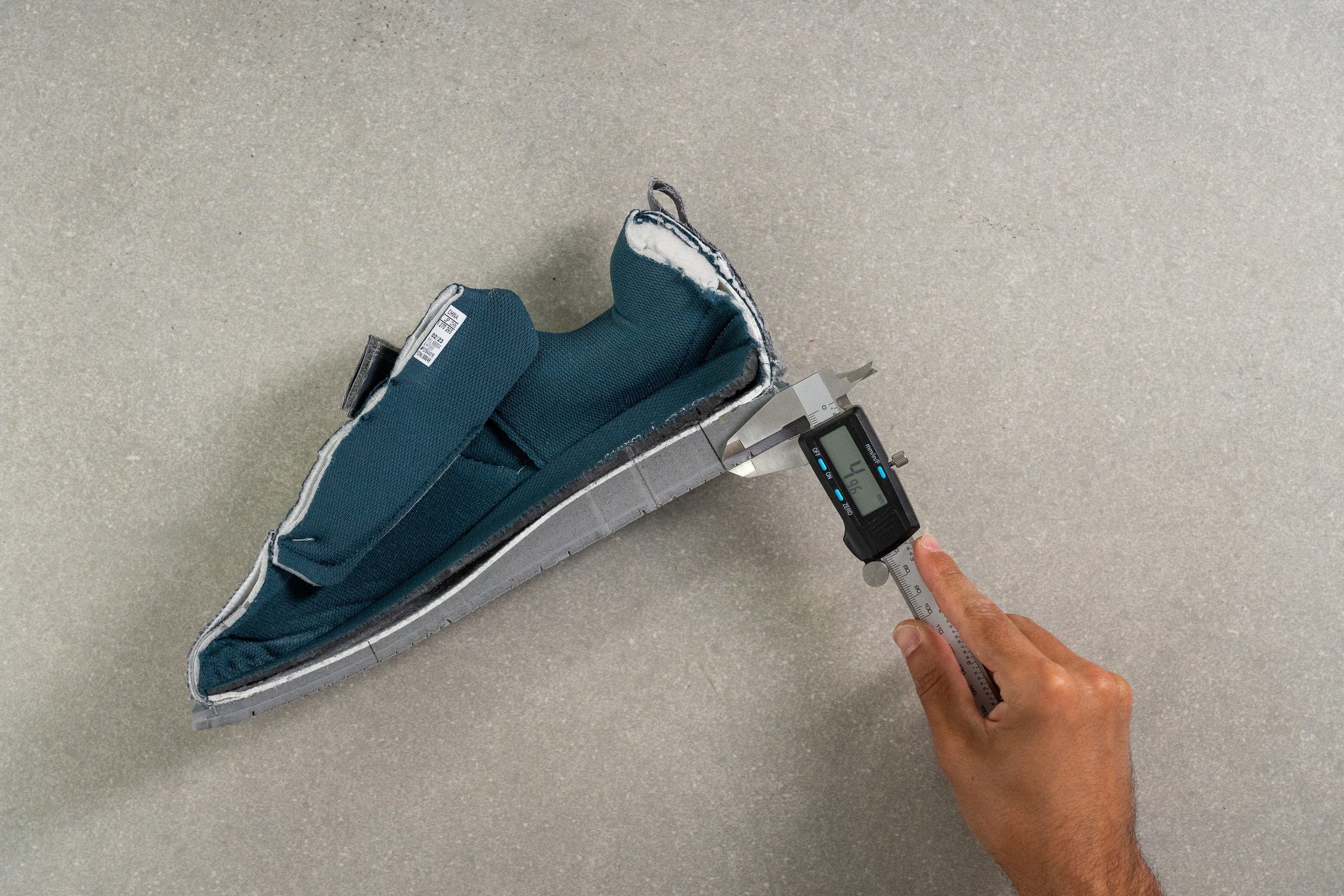
| Powerlift 5 | 5.0 mm |
| Average | 3.6 mm |
Misc
Insole thickness
A padded insole protects the foot from the shoe's firm platform. Based on our calliper measurement, it is 5.3 mm thick.
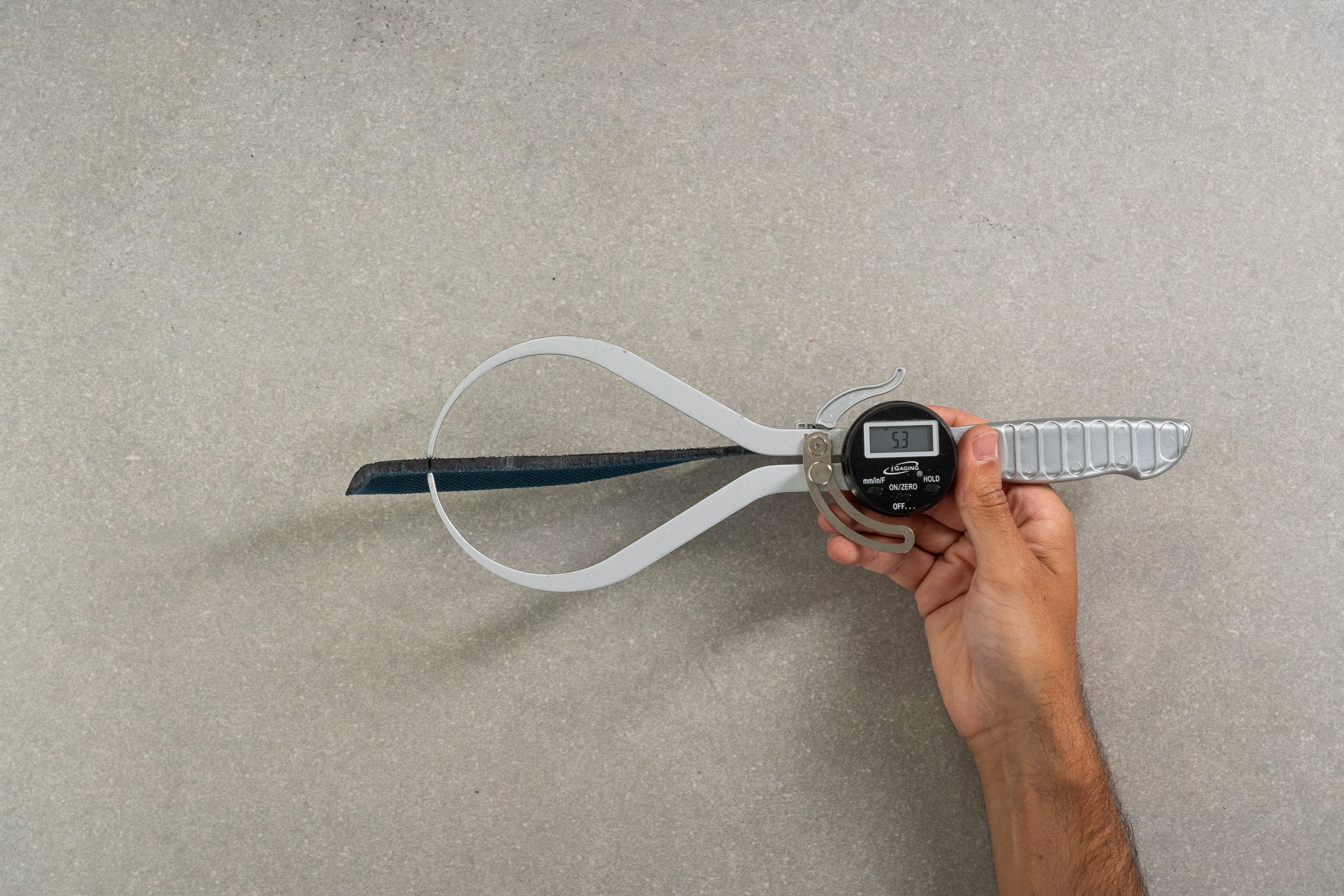
| Powerlift 5 | 5.3 mm |
| Average | 5.9 mm |
Removable insole
This Adidas lifter comes with a removable insole to give you the option of customising the underfoot experience with orthotics.
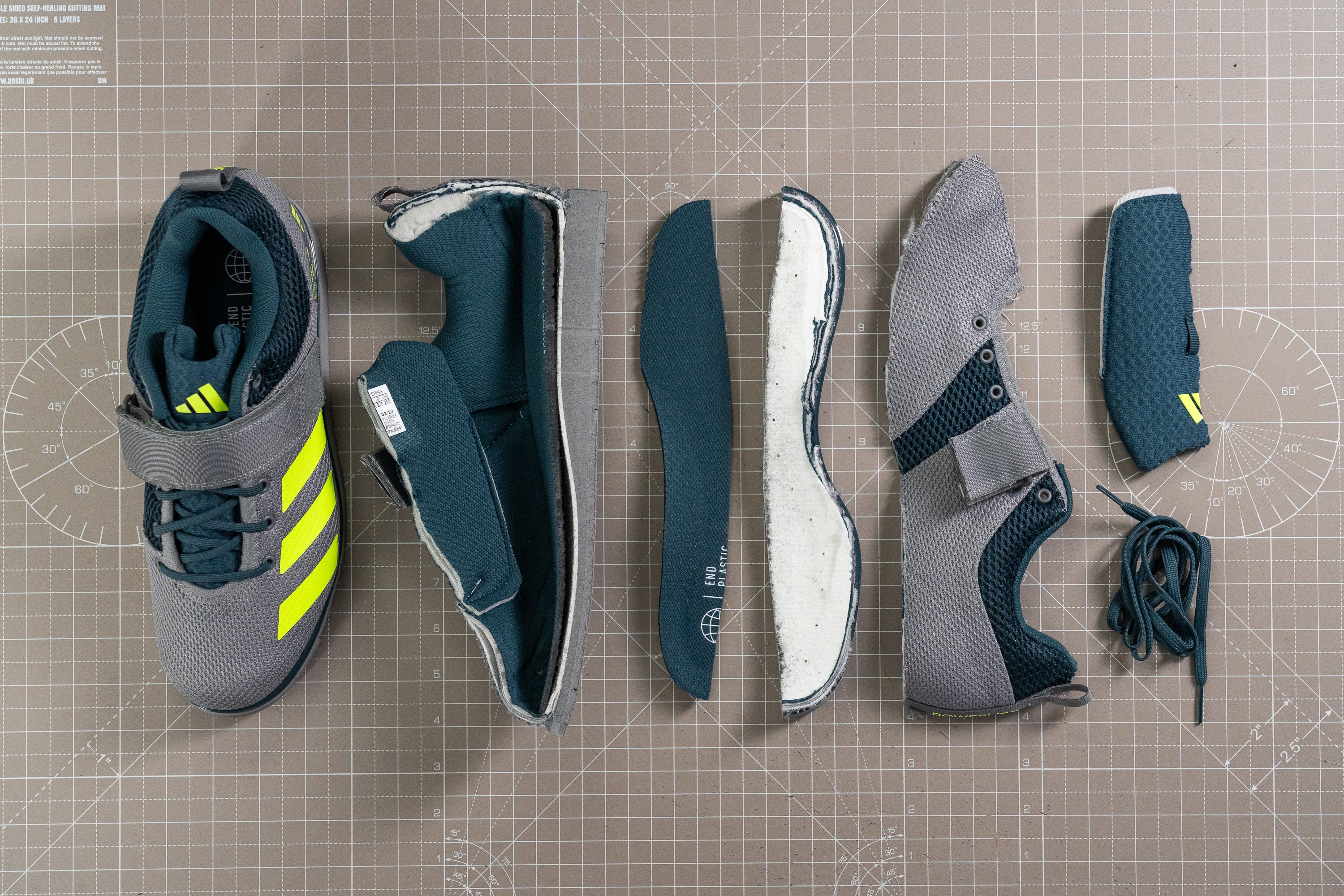
| Powerlift 5 | Yes |
Tongue padding
There is a good amount of tongue padding that doesn't feel like an overkill. Using a calliper, we measured its thickness at a good 4.7 mm.

| Powerlift 5 | 4.7 mm |
| Average | 5.0 mm |
Tongue: gusset type
Even though it is considered a budget-friendly lifter, we believe that the Powerlift 5 would benefit a lot from a gusseted tongue.
The problem is that its non-attached tongue has a tendency to slide, roll, and bunch up especially as we started moving more actively in the shoe.
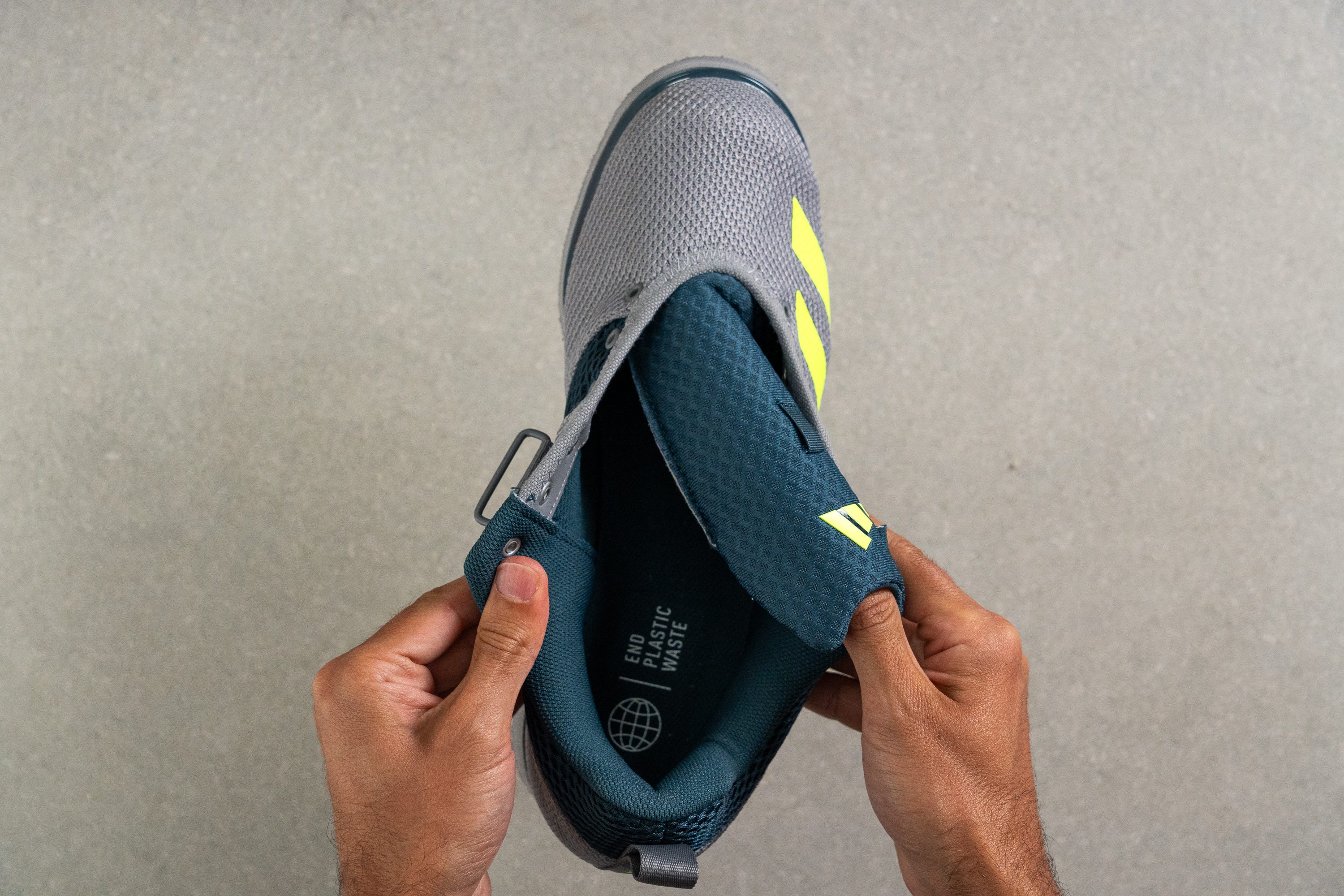
| Powerlift 5 | None |
Heel tab
A handy finger loop is attached at the back of the Powerlift 5. It really helps to get the shoe on and off quicker, especially when you bring two pairs of shoes to the gym.

| Powerlift 5 | Pull tab |
Sustainable materials
Last but not least, the brand claims using sustainably sourced materials to make the shoe's upper. According to Adidas, at least 50% of the shoe's upper is made of recycled content.

